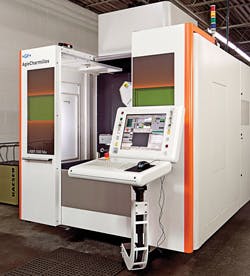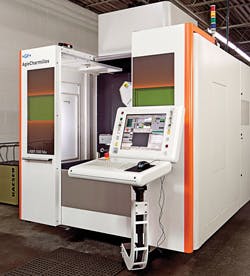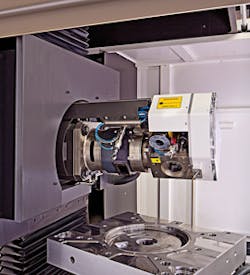Laser ablation and texturing of mold surfaces
Virtually any texture, grain, or pattern can be duplicated
Al Gordon
Over the last 30 years, the advent of plastic as the material of choice for consumer goods has caused a seismic shift in the manufacturing process of goods and parts that were historically built from other materials. Glass and steel have been replaced by plastic in so many areas of our day-to-day life, including automotive interiors and exteriors, electronics, household goods, lawn and garden items, containers, and medical components. Textures and grains on plastic products are becoming more important in the marketplace. The physical appearance of plastic items when enhanced can result in an indication of quality depending on the surface texture or grain. OEMs in many industries understand this and are mandating higher quality and variety in terms of the surfaces their suppliers provide. Because of this, moldmakers are seeking methods of improving the level of quality and variety in surface texturing of blow molds and injection molds.
Traditionally, moldmakers have used what is referred to as chemical etching to surface molds. This process involves submersing the mold surface in a chemical mixture that will eat away the surface in the areas not covered by a protective coating, producing a pattern or grain on the mold surface. Chemical etching is by no means an exact science and there is no way of predicting the exact appearance of a product until it is molded. The toxic and corrosive chemicals used in this process have a negative impact on the environment and are extremely harmful to the people exposed to them. Government regulations for the handling and disposal of the chemicals are becoming more onerous and expensive, costs that usually end up being passed to the customer.
Laser ablation
Laser ablation technology, on the other hand, has virtually no impact on the environment. This technology takes the black art out of texturing molds. The customer knows exactly what the product will look like before the laser applies the texture because it can be simulated on a computer screen. These results can be repeated over and over again exactly as they are developed in the initial design no matter where the part is shot around the globe. Textures can be produced directly from digital files, resulting in textures that can be exactly repeated, and inconsistencies on surfaces can be completely eliminated.
Ablation involves turning a solid material into vapor. Most metals can be turned into vapor using laser technology, where the focused energy in a laser beam is absorbed by the surface of a metal. This energy is converted into heat that increases the surface temperature to the point of vaporization. Fiber lasers are an ideal heat source because they can be controlled for varying energy levels by a variety of lenses with different focal lengths.
Automation process
Laser ablation is a highly automated process. Other than programming, the laser does the rest, resulting in lower labor costs. The turnaround times for chemical etching and laser ablation are roughly the same because the ablation process can take substantial time to complete the texture application. However, this is more than offset by lower labor costs and increased quality and repeatability, and the detail that five-axis laser technology can achieve is virtually limitless. This technology can achieve up to 50 different layers of texture on a surface within microns of accuracy. Virtually any texture, grain or pattern, organic or non-organic, can be copied into the software and duplicated on the mold surface. The only limitations are the limitations of the molding process to duplicate a pattern from the mold surface to a plastic product. If the pattern, grain, or texture results in less than favorable steel conditions, the part may not mold properly or may be damaged during the extraction process. The software operating the laser ablation process automatically builds in a draft on the pattern to combat this for the most part.
ICS Laser Technologies (Windsor, Ontario, Canada), a shop that services the injection mold and blow mold industries by engraving and applying texture to mold surfaces, is currently the only company in Canada and one of the few in North America operating a five-axis laser system from GF Agie Charmilles to support the moldmaking industry by producing laser ablated molds. This technology is widely accepted in Europe and Asia, and the interest in North America is growing rapidly. It is only a matter of time before the use of five-axis laser ablation in applying surface texture to molds becomes an approved alternative process for OEMs in North and South America. The challenge is to offset the reluctance on the part of many OEMs, specifically in the automotive sector, to shift from use of the chemical etching process. This is a function of their lack of awareness of the full capabilities of the laser ablation process. ✺
Al Gordon ([email protected]) is director of sales at ICS Laser Technologies, Windsor, Ontario, Canada.
More Industrial Laser Solutions Current Issue Articles
More Industrial Laser Solutions Archives Issue Articles


